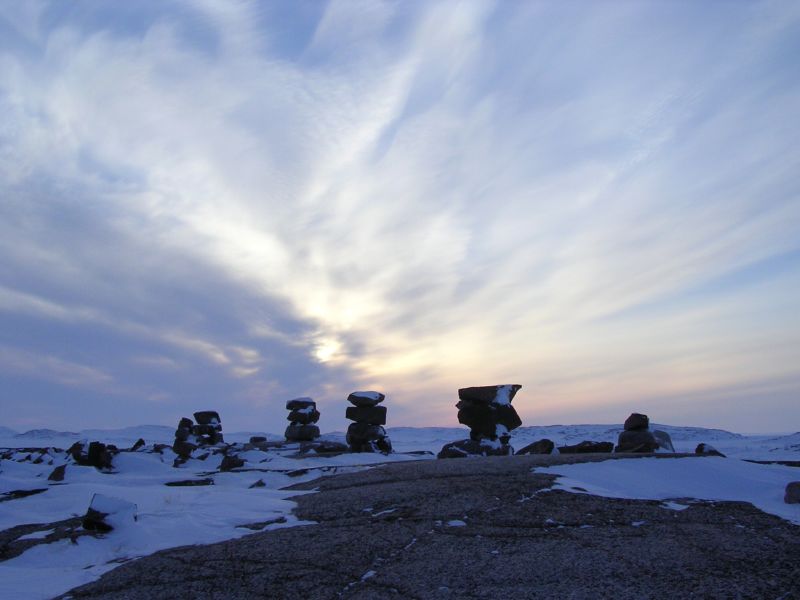I went to the North Pole in April, the favored month for travel in the High Arctic. That was 16 years ago. According to the 2017 National Climate Assessment, the region’s warming began accelerating around the time of my visit. It is no longer the same frozen ecology and economy I had seen.
The assessment included a report titled “Arctic Shows No Sign of Returning to Reliably Frozen Region of Recent Past Decades.” Worse, “What happens in the Arctic doesn’t stay in the Arctic — it affects the rest of the planet,” acting NOAA Administrator Timothy Gallaudet said on release of the climate study. In the text, NOAA coins a term: “New Arctic.” Barry Lopez, the great chronicler of the ancient boreal geography and traditional culture, would be having nightmares.
An ice-free Arctic Ocean is likely within a few decades. That will make a huge difference for the climate system, as jet streams are diverted, ocean currents disrupted, and weather extremes increase. Because water absorbs heat that ice reflects, and frozen greenhouse methane in permafrost is released to the atmosphere as the soil warms, the planetary temperature will also be affected by these positive feedback loops. There is no going back from an ice-free Arctic.
In April, the region has emerged from its darkness, and there is light for most of the day, but the winter ice still defines the region. That makes it ideal for landing a small plane at the Pole. We stayed in a guest house in Qaanaaq, Greenland, while waiting for clear weather. It had an opening in the outer wall where a small tractor placed cubes of blue freshwater ice that come down from the glacier into Baffin Bay.
Qaanaaq lies in a strip of land between the Greenland icecap and this arm of the Arctic Ocean. That land used to be greener, hence the Norse name for the island. The change is the result of a cycle of ice ages spread over millennia. Now we have pumped up the global average temperature by almost 2 degrees Fahrenheit in the last half century, and the rate of Arctic warming is twice that.
 While we waited, I became fascinated with a solitary, commanding inukshuk visible on the lip of the glacier, high above the village. The Inuit have long piled rocks into the size and shape of a man. The cairns have several meanings, one of which is, “The People have been here.” They are trail markers from one generation to another.
While we waited, I became fascinated with a solitary, commanding inukshuk visible on the lip of the glacier, high above the village. The Inuit have long piled rocks into the size and shape of a man. The cairns have several meanings, one of which is, “The People have been here.” They are trail markers from one generation to another.
One night around 10 p.m. I could not go to sleep. I decided to go for a walk. The sun was down but frozen sea and land were bathed in a peach-like twilight. So I climbed the steep scree bordering the town and reached the inukshuk that lords over Qaanaaq the way the statue of Christ the Redeemer dominates Rio de Janeiro. When I came up to the ancient sculpture, I was on the border of the icecap and was able to gaze inland. There I saw a trail of inukshuks heading over the ice.
The ice was sculpted by the wind into rolling hillocks, giving a short horizon. As a result, although I could no longer see Qaanaaq, I was always in sight of an inukshuk. I continued ever higher on the glacier, with another rock totem always visible on attaining the one I was aiming for. I was struck by the labor involved in trucking tons of stone inland and upland without machine or even draught animal, a clear sign of significant purpose in the long-ago endeavor.
I went from cairn to cairn, and I dreamed about the reasons for this ancient transportation infrastructure — and its future. For the Greenland icecap that supports the inukshuks is an endangered species, as is the marine icecap that surrounds the northern shoulders of the island and provides an ecosystem for polar bears, narwhals, wolves, and seals, plus a related subsistence economy for the indigenous humans.
As the Greenland terrestrial icecap retreats from the sea, it will undermine the ancient rock-men. As the Arctic Ocean icecap retreats, it will undermine the functioning of a traditional society. Gone will be the hunting ground for the population. A census shows today huskies outnumber humans in Qaanaaq. In the future, dog sleds will give way to pickup trucks, and the citizens will have to find some other way of obtaining drinking water instead of the glacier ice cubes that freely float their way today.
As I walked, there was always a horizon a few hundred yards away and always another inukshuk, but nothing else in a world where ground and sky reflected each other in a pale vermillion glow. After close to a half dozen stone markers, I woke from my Arctic dream and realized I might become lost. But I had no trouble following the trail of inukshuks back to the house, since the ancient constructors knew what they were doing in laying out the trail — although I never did discover where it led.
I arrived home around 2 a.m., only to find everyone awake, worried about me. With the ancient man-like dolmens as my companions, however, I had always had a friend on the lonely frozen plain. For how much longer till the melting ice topples them, that remains to be seen.
This piece will appear in the March/April issue of The Environmental Forum.
The Environmental Forum is now even easier to read online! ELI members can access the full issue here.
